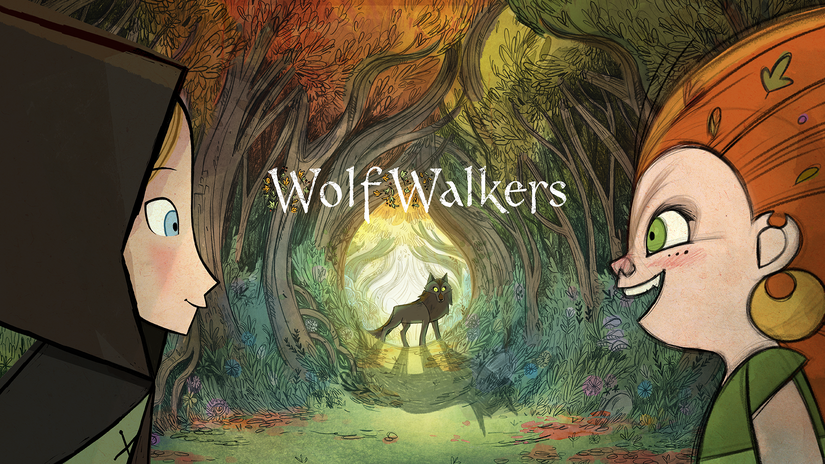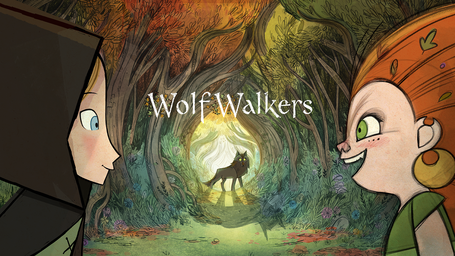A lush forest appears in front of our eyes, dewy from the mist and alive with movement. The scene appears as if it could be sampled from a book of fairytales; the remnants of hand-drawn lines and splotches of watercolor catch at your attention. Without a word, we are introduced to the world of Wolfwalkers.
1650’s Ireland is a whirlwind of change, from rapidly expanding townships to English colonization (along with its social and religious practices). Robyn, a young English girl, has just moved to Kilkenny with her father Bill. Armed with a wooden crossbow and a lack of fear, Robyn yearns to join her father beyond the city gates as he clears the forest of ravenous wolves. Our protagonist eventually finds her way into the woods despite the orders of the town’s Lord Protector. However, what she finds challenges all the warnings previously given to her: a girl named Mebh with the ability to control wolves, and to even become one herself. The legend of the eponymous “wolfwalkers” slowly comes to life in mesmerizing beauty.
Wolfwalkers is layered with themes that protest the authoritarian rule of historical English figures (such as Oliver Cromwell) and assert the importance of natural preservation. Yet, I found the film’s exploration of fear to be the most fascinating and unifying. The townspeople, including Bill, are imprisoned by fear. On one side, the Lord Protector’s harsh laws restrict citizens’ movement and religious diversity. On the other is an antagonism towards nature and a paralyzing fear of the creatures that reside within the forest. We witness first-hand what happens when fear overcomes all else: Bill desperately follows the Lord Protector’s orders without question, unwittingly stifling the voices of the townspeople and as well as that of his own daughter.
Visually, we see freedom and fear clearly contrasted. The town is disconcertingly cage-like, drawn full of angles and straight lines. From a distance, we can see it flattened into a two-dimensional square with houses layered on top of each other (with the Lord Protector’s castle on the top, of course). These visual design choices are unlike anything I’ve seen in animation before (and probably a sign I should be watching more animated films in general). Meanwhile, the forest is slanted, warp-edged and bursting with greens, yellows, and reds. The animation of the wolf pack stood out in particular, often drawn as a swirling, fluid mass flowing free in every direction. All of these shapes and colors culminate in a breathtaking scene with Mebh and Robyn, backed by AURORA’s joyous song “Running with the Wolves”.
While I adore the impeccably crafted and detailed films made by Pixar and Disney, Wolfwalkers truly made me appreciate the art of animation all over again. After finishing the film, I spent a long time pondering its creative choices, character design, and visual environments. I thought about how much I would have cherished the film if I were a child, but also felt grateful to be conscious of its many profound messages and unique style as an adult.
Wolfwalkers is currently streaming on AppleTV+.


